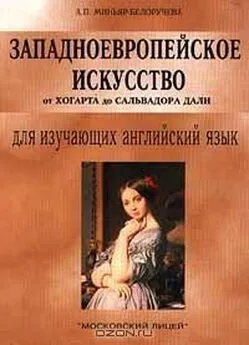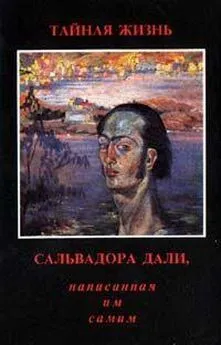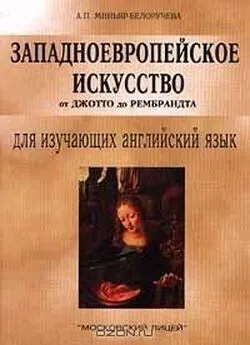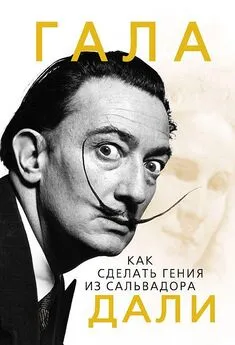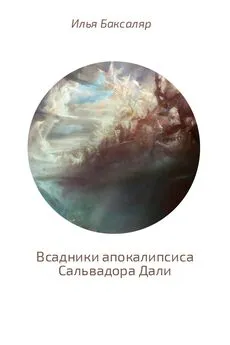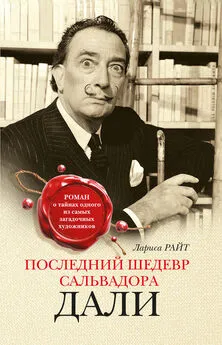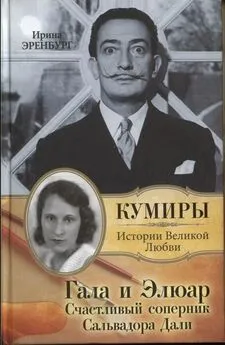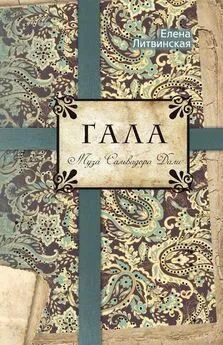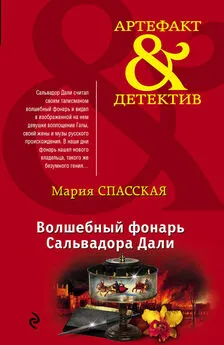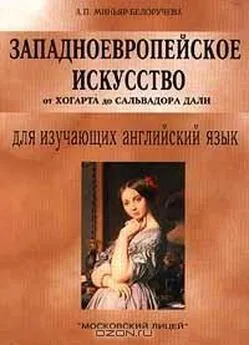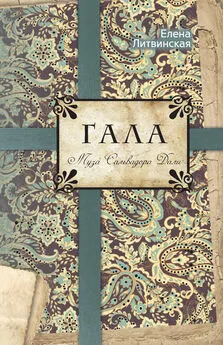Алла Миньяр-Белоручева - Западноевропейское искусство от Хогарта до Сальвадора Дали
- Название:Западноевропейское искусство от Хогарта до Сальвадора Дали
- Автор:
- Жанр:
- Издательство:«Московский Лицей»
- Год:1999
- Город:Москва
- ISBN:5-7611-0182-3
- Рейтинг:
- Избранное:Добавить в избранное
-
Отзывы:
-
Ваша оценка:
Алла Миньяр-Белоручева - Западноевропейское искусство от Хогарта до Сальвадора Дали краткое содержание
Тексты настоящего пособия охватывают почти три века истории западноевропейского искусства от Хогарта до Сальвадора Дали. Это позволяет обучаемым наряду с усвоением обширного лексического материала, приобрести культурологические знания, поскольку тексты содержат информацию о жизни и творчестве крупнейших западно-европейских художников XVIII – XX вв. Система упражнений направлена на усвоение лексического материала и развитие навыков устной речи.
Данная книга является второй частью цикла учебных пособий «Западноевропейское искусство (для изучающих английский язык)». В первую книгу вошли тексты, охватывающие пять веков западноевропейской живописи oт Джотто до Рембрандта. Данное пособие предназначено для студентов-искусствоведов, учащихся классических гимназий, лицеистов и всех изучающих английский язык и интересующихся западноевропейским искусством.
Западноевропейское искусство от Хогарта до Сальвадора Дали - читать онлайн бесплатно полную версию (весь текст целиком)
Интервал:
Закладка:
Make sure you know how to pronounce the following words:
Constable; Turner; Ruisdael Stour; Suffolk; chords; triumphantly; varnish; palette; plough; wain; flexible; culminated; plank
The Hay Wain – «Телега для сена»
Suffolk – Суффолк (графство)
Stour – р. Ст(а)ур
I. Read the text. Make sure you understand it. Mark the following statements true or false.
1. Constable was the greatest English portraitist.
2. In the first half of the eighteenth century nature was beginning to be swallowed up by the expanding cities of the Industrial Revolution.
3. Discoloured varnish darkened the Old Masters.
4. Constable often visited Italy, Belgium, Holland and Spain.
5. The Hay Wain was highly praised at the Salon of 1834.
6. In 1829 Constable became member of the Royal Academy.
II. How well have you read? Can you answer the following questions?
1. What was the mainstream of English painting in the first half of the nineteenth century? What was the attitude of Constable and Turner to nature?
2. What did Constable honour? What did he love and admire?
3. What did Constable start to record as early as 1802? Why? What do Constable's studies show? What tours did Constable make?
4. What does The Hay Wain sum up? What does this picture show? What is the major element of the picture? How has Constable depicted the clouds, the stream and the trees? How were the white highlights called? What did Constable set in motion?
5. Was Constable happy in later life? Why?
6. What was one of Constable's late pictures? What is represented in this work of art? What brings to the finished painting the immediacy of the colour sketch?
III. i. Give Russian equivalents of the following phrases:
the poetic landscape; the brown tonality; oil sketches made outdoors; a surrender to the forces of nature; self-identification with sunlight and wind; to make sketching tours; regions of scenic beauty; preliminary outdoor studies; patches of light; free brushwork; to set in motion; a flexible steel palette knife; a finished painting; a colour sketch.
ii. Give English equivalents of the following phrases:
законченная картина; цветной набросок; гибкий стальной шпатель; подчиниться силам природы; пятна света; эскизы маслом, написанные на пленэре; подвижные мазки; богатство цвета; олицетворение с солнечным светом и ветром; живописные места; романтический пейзаж; коричневый тон; ездить по стране и писать этюды.
iii. Make up sentences of your own with the given phrases.
iv. Arrange the following in the pairs of synonyms:
a) triumphant; dapple; preliminary; highlight; hue; ripple;
b) mark; preparatory; victorious; tone; accent; wave.
IV. Here are descriptions of some of Constable's works of art. Match them up to the titles given below.
1. The painting shows the Stour with its trees, a mill, and distant fields.
2. The distant church tower, the wagon, the horses, and the boy looking over the gate are instruments on which light plays.
a. Stroke-by-Nayland
b. The Hay Wain
V. Translate the text into English.
Новое отношение к природе воплотил в своем творчестве Джон Констебл. Констебл никогда не покидал Англию. Он изучал только ту живопись, которую мог видеть на родине. Констебл один из первых стал писать этюды на пленэре, опередив в непосредственности впечатления художников французской школы. Важным нововведением Констебля явились его большие эскизы маслом. Констебл писал смелыми подвижными мазками.
Картины Констебля на парижских выставках 1824 и 1825 гг. явились истинным откровением для французских романтиков. Новаторская живопись Констебля оказала большое влияние на развитие французского пейзажа XIX века.
VI. Summarize the text.
VII. Topics for discussion.
1. Constable's style and colour.
2. Constable's artistic influence.
Unit VIII Turner (1775-1851)
Joseph Mallord William Turner was a Londoner. He had no mystical attachment to nature. He made frequent trips throughout the Continent, especially Germany, Switzerland and Italy, revelling in mountain landscapes, gorgeous cities (especially Venice), and the most extreme effects of storms, fires and sunsets. Once he even had himself tied to a mast during a storm at sea so that he could experience the full force of the wind, waves, and clouds swirling about him. Turner made beautiful and accurate colour notes on the spot in water-colour, and painted his pictures in the studio, in secrecy, living under an assumed name and accepting no pupils. He was the first to abandon pale brown in favour of white, against which his brilliant colour effects could sing with perfect clarity.
Turner often painted historical subjects, usually those of Delacroix, involving violence as well as shipwrecks and conflagrations, in which the individual figures appear as scarcely more than spots in a seething tide of humanity. He liked to accompany the labels with quotations from poetry, often his own. Nonetheless, at his death a great many unfinished canvases were found that had no identifiable subject or representation at all. Turner really enjoyed and painted the pure movement of masses of colour – a kind of colour music, strikingly relevant to Abstract Expressionism of the 1950s. Shortly before the opening of an exhibition at the Royal Academy, the ageing Turner, would send unfinished works, and on varnishing day paint in the details to make the pictures exhibitable to a nineteenth-century public.
The Slave Ship , of 1840, represents an incident common in the days of slavery, when entire human cargoes were thrown into the sea, either because of epidemics or to avoid arrest. The ship itself, the occasional figures, and the fish feasting on the corpses in the foreground were obviously painted at great speed only after the real work, the movement of fiery waves of red, brown, gold, and cream, had been brought into completion.
Rain, Stream and Speed , of 1844, is one of the first paintings of a railway train, and its Romantic idealisation of «progress» – man conquering nature by utilising its force. The train with its light carriages moving across the high bridge is enough of a subject already, but Turner lifts it to an almost unearthly realm in which insubstantial forces play through endless space. The veils of blue and gold are real subjects of the picture. Turner's heightened and liberated colour sense provided a revelation to those Impressionists (especially Monet) who took refuge in London in 1870.
Make sure you know how to pronounce the following words:
Joseph Mallord William Turner; attachment; gorgeous; quotation; revelling; revelation; violence; especially; reveries; Monet
Rain, Stream and Speed – «Дождь, пар и скорость»
The Slave Ship – «Корабль с рабами»
I. Read the text. Make sure you understand it. Mark the following statements true or false.
1. Turner had mystical attachment to nature.
2. Turner liked to accompany the labels with quotations from poetry.
3. Turner often painted landscapes which he constructed in the studio.
4. Turner always sent finished works to the Royal Academy.
5. Turner painted the pure movement of masses of colour – a kind of colour music, strikingly relevant to Abstract Expressionism of the 1950s.
6. Turner's heightened and liberated colour sense provided a revelation to the Impressionists.
II. How well have you read? Can you answer the following questions?
1. What countries did Turner visit? What did he want to experience?
2. Where did Turner paint his pictures? What colour did he favour?
3. What subjects did Turner like to paint? What canvases were found after Turner's death?
4. What did Turner enjoy to paint?
5. What does the Slave Ship represent?
6. What is depicted in one of the first paintings with the Romantic idealisation of «progress»?
III. i. Give Russian equivalents of the following phrases:
Mystical attachment to nature; to make frequent trips; mountain landscapes; to experience the full force of the wind; to make colour notes; to live under an assumed name; to abandon smth in favour of smth; to accompany the labels with quotations from poetry; unfinished canvases; identifiable subject; to paint the pure movement of masses of colour; shortly before; on varnishing day; to make the pictures exhibitable; to bring into completion; colour sense.
ii. Give English equivalents of the following phrases:
горный пейзаж; незадолго до; подготовить картины для выставки; совершать частые поездки по; незавершенные полотна; передавать мгновенные изменения в природе; сопровождать картины цитатами из поэзии; загадочная привязанность к природе: испытать всю силу волн; в день открытия; чувство цвета; делать цветные наброски.
iii. Make up sentences of your own with the given phrases.
iv. Arrange the following in I he pairs of synonyms:
a) finished; exhibition; label; gorgeous; revelling; revelation;
b) splendid; display; completed; disclosure; marker; amusement.
IV. Here are descriptions of some of Turner's works of art Match them up to the titles given below.
1. It is one of the first paintings of a railway train.
2. The painting represents an incident common in the days of slavery, when entire human cargoes were thrown into the sea.
a. The Slave Ship
b. Rain, Stream and Speed
V. Translate the text into English.
Джозеф Мэллорд Уильям Тернер был типичным романтиком. К нему рано пришло признание. С пятнадцатилетнего возраста он участвовал в ежегодных выставках Королевской Академии искусств. Жизнь Тернера полна загадок. В свои многочисленные путешествия Тернер часто уезжал тайно.
Наследие художника велико: более 21000 произведений на исторические, мифологические, жанровые сюжеты, но главное – пейзажи. Он тщательно изучал природу. Тернеру были нужны лишь некоторые стороны видимой реальности, от которой могла отталкиваться его фантазия, создающая пейзаж, существующий только в его воображении. Стихией Тернера было море, движение туч, бушующие стихии. Передача световых эффектов, возникающих во влажной атмосфере были главной его задачей. Тернера интересовали мгновенные изменения в природе, впечатление от света и воздуха, поиск передачи которого через несколько десятков лет захватят целое поколение живописцев.
Читать дальшеИнтервал:
Закладка:
